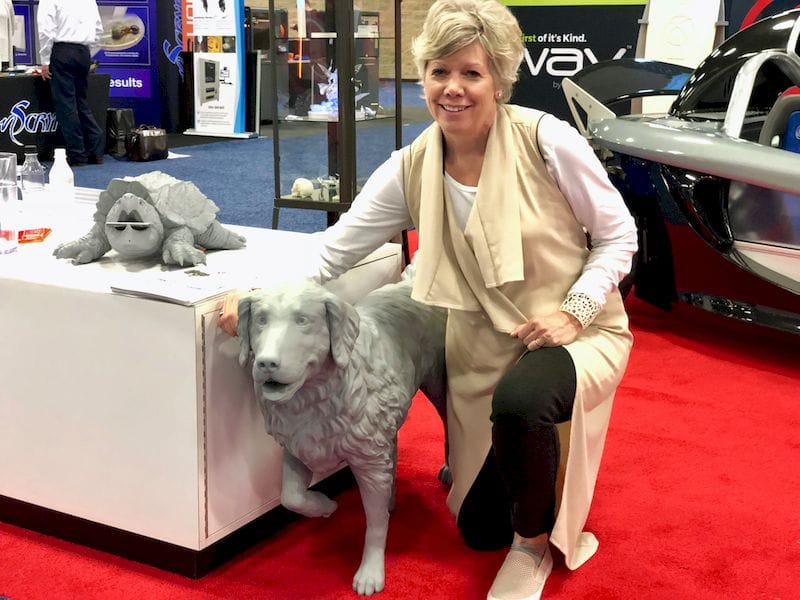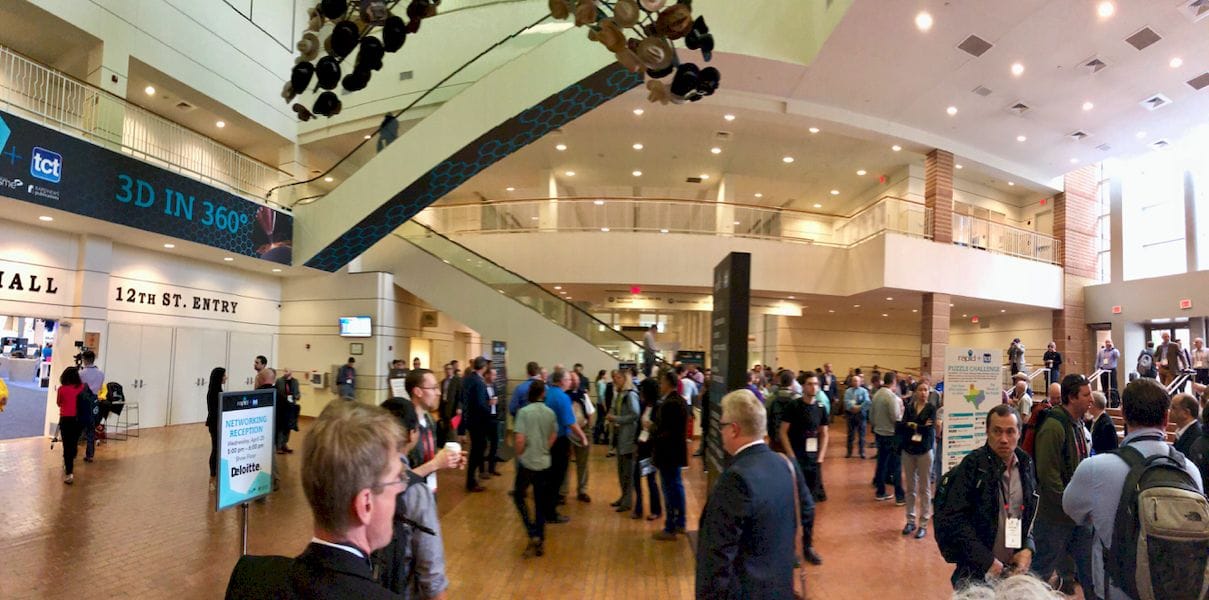
This year’s Rapid+TCT event took place in the warm city of Fort Worth, Texas.
The annual 3D print technology conference and tradeshow has become the largest such event taking place on this side of the Atlantic, and is now perhaps the second biggest in the world, second only to Frankfurt’s FormNext.
But being second is still being big. At this event there were in excess of 350 vendors of 3D printing equipment, materials, software and services. While there were countless startups visible, there were also all of the major players.
One vendor in particular claimed a large presence. Desktop Metal’s exhibit was the largest onsite, and actually was composed of two full stories, with equipment displayed on the bottom, and offices on the top. Several attendees noted Desktop Metal’s “booth” was so large that you could “probably rent a room for the night in there.”
A somewhat surprising observation was that while both 3D Systems and Stratasys were prominently on site, their exhibits were considerably smaller than in prior years, where they typically occupied the largest spaces. I’m not quite sure what this means, but it could be only a consequence of marketing budget maneuvers.

Several companies deployed equipment in live, operating mode. Spee3D was printing metal; 3D Systems’ Figure 4 system was pumping out dozens of turbine blades, and multiple desktop vendors printing hundreds of samples in resin, powder and filament materials. Of course, many of those offering large equipment requiring high power, compressed air and other services unlikely to be found on a tradeshow floor had to make do with simply showing static machines.
We truly wanted to visit each and every vendor, but this was simply logistically impossible. With only a total of 21 opening hours, we’d have only a couple of moments with each. And that doesn’t count side meetings or lunch.
But we were able to visit with over 50 key companies offering new or updated products. Some were quite startling, even though they were often found at very small stands from startup companies with new ideas and concepts.
Over the next few weeks we’ll be going through our findings, which are obviously far too extensive to publish in a day or even a week. And that’s in addition to the many dozens of official announcements that were issued as the conference opened. We’re going to be quite busy!
We were told, and indeed witnessed this event growing. Not only were there substantially more attendees (up to 6,000, apparently) and more exhibitors, the exhibits themselves were, in general, much larger than the previous year.
This suggests larger marketing budgets from companies, as well as increased interest from the public.
Several exhibitors noted they found the knowledge of the attendees to be significantly higher than in previous years. There were fewer “novice” questions and often more detailed enquiries about specific applications.
All of this bodes very well for the 3D printing industry. More companies are offering more amazing products to be used by more ingenious users.
Tis a good time to be in 3D printing.

